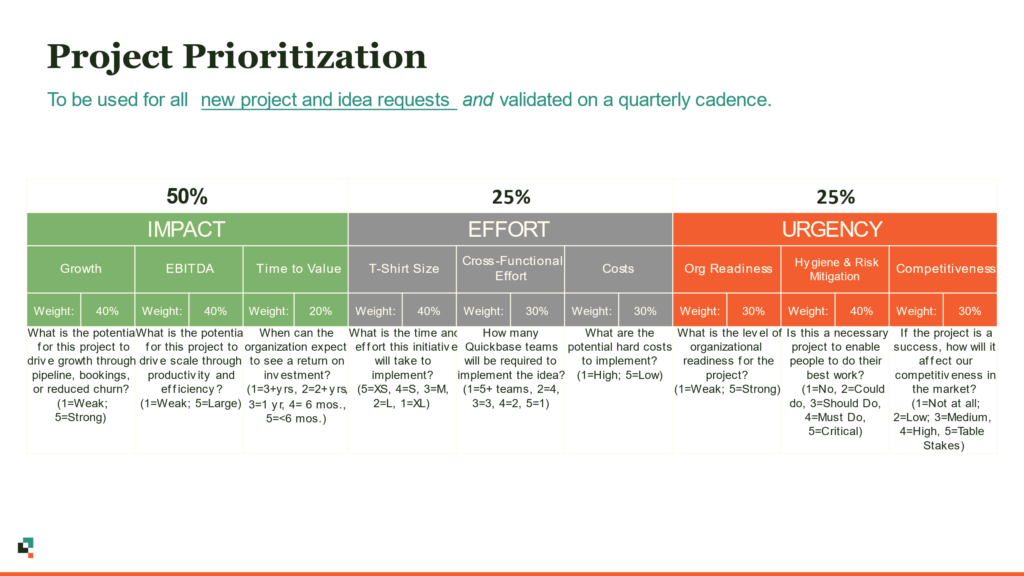Adjusting to the Economic Downturn – RevOps Panel with OpFocus, Salesforce, and SalesIntel
How do SaaS leaders adjust course during an economic downturn? How does one ready for growth for when the market stabilizes?
These are the questions most RevOps leaders are asking today.
With an uncertain outlook, teams are reevaluating their tech stack, reducing headcount, and revising business strategies for efficiency. As a RevOps leader, you aim to create streamlined, scalable processes capable of weathering any storm. It’s no wonder that leaders are looking for pointers from proven RevOps veterans.
We brought together a group of RevOps thought leaders to discuss how they prepare and prosper in these economic headwinds.
Joining our in-person panel discussion on a beautiful summer rooftop were three RevOps leaders representing 3 different RevOps team sizes, from having a few on the team to having several dozen on the ops team:
- Eric Sargent, VP of GTM Ops at Quickbase
- Danielle Marquis, VP of Revenue Operations at Zappi
- Kaitlin MacKenzie, VP of Revenue Operations at Onapsis
Facilitated by Jarin Chu, VP of Marketing at OpFocus
This discussion outlines what RevOps veterans are doing to stabilize their processes while preparing for future growth and how to take steps to apply it to your company.
What types of adjustments have you had to make to your team, systems, processes, and measurement after reductions in force (RIFs)?
The panel recommended two major areas to focus on when running revenue operations during turbulent economic times:
Maintaining lockstep executive and cross-functional alignment
Actively involving stakeholders in your RevOps planning and execution, setting expectations around timing and duration, and ensuring clear communication throughout the process are ever more integral to running successful revenue operations when so much is in flux and ever changing. As challenging as it is, go-to-market alignment, executive alignment, and a unified go-to-market roadmap that spans sales, marketing, customer success, and product is essential to narrow the focus that a short staffed, resource-strapped team is actually able to move the needle on.
Reducing the time horizon between lookbacks and increasing the frequency of tech, team, and process reviews
In typical times, RevOps teams might review their tech stack once a year around license renewal dates. Maybe review processes and handoffs with other teams or systems ad hoc when something breaks. A manager might review team/resource fit when significant initiatives get fumbled.
However, proactive leaders are increasing the frequency in which they conduct regular assessments on company health, team performance, and tool usage. These more frequent audits, for some quarterly, for others monthly, help ensure that work actually impacts revenue growth, and are able to responsively cut license spend based on actual use.
In sum, panelists emphasized the utmost importance in collaboration and alignment, efficiency in everything they do, and adaptability in navigating the challenges RIFs bring. Maintaining a relentless focus on revenue impacting initiatives are vital to navigating the current economic climate.
What tactics have you seen teams try that have fallen flat?
RevOps leaders try numerous strategies to grow and sustain their business, not all of which pan out. Our panel discusses strategies they’ve tried that didn’t have the intended impact.
Kaitlin focuses on managing team morale during difficult times, such as layoffs or organizational changes. She cautions against overly reductive statements like “this is the team that’s going to get us there” immediately after an adverse event. Empathetic, thoughtful communication is a crucial factor in maintaining team morale, both for internal and external communications, especially social media.
Danielle advises using cautious words and avoiding buzz terms that may cause confusion or mistrust.
Eric stresses the importance of communication and transparency, particularly in educating the team about overall financial health of the business. Take time to explain the significance of key metrics, such as EBI (Enterprise Business Intelligence), and how they contribute to the company’s financial decision-making to employees. Ground team members with knowledge of how the business operates, such as how the board looks at the company’s performance and advises various decisions.
The discussion highlights the value of authentic communication, candor, and acknowledging uncertainty. As a go-to-market or RevOps leader, being transparent about not knowing the future is essential to leadership in turbulent times.
What are some tactics that you’ve started, stopped, or would continue to do for your tech stack?
When budgets tighten, evaluating your tech stack to identify what’s fueling revenue growth and what’s unnecessary is essential. Our panel touches on the evaluations they’re doing in their organizations.
Eric highlights the importance of quantifying the business impact of technology investments. Compare the investment expense with the return it generates and evaluate adoption and utilization metrics. This approach led his team to make trade-offs, cut back on specific tools like the number of ZoomInfo licenses based on actual log-in rates, and reallocate the saved budget to other business needs.
Let go of technology the team is underutilizing or that isn’t generating a financial impact. To help team members release tools they might be emotionally attached to, coach them on the importance of making data-driven decisions, and to consider the overall impact on the team’s productivity. Evaluate requests for new tools and assess their alignment with cost reduction and revenue generation goals. Focus on the pain points and time-to-value when considering adopting new tools.
Overall, the discussion centers around the need for evaluating the business impact of technology, making data-driven decisions, letting go of underutilized tools, and strategically allocating resources to maximize efficiency and value within the tech stack.
How can RevOps leaders juggle the strategic projects against the urgent “fires” that arise with fewer resources?
As RevOps leaders, our roles are increasingly challenged by a growing number of urgent issues that demand our attention daily. Typical fires might include sales challenges or the pressing need for a segmentation project. The panel acknowledged the difficulty of finding time for strategic thinking amidst the ongoing firefighting. What actionable frameworks can help prioritize our efforts and align them with the overall goals and priorities of the company?
Eric shared an insightful prioritization framework from his primary investor, Vista. This framework encompasses impact, effort, cross-functionality, sunk cost, and urgency. By applying these dimensions to our decision-making processes, Eric’s team makes informed choices and ensures that the urgent, short term efforts align with the bigger picture.

Kait shared how leveraging RFCs (Request for Comment) reduces noise and fosters cross-functional alignment for important initiatives. The key lies in clearly defining the business problem and desired outcomes, and involving relevant stakeholders from the outset. This approach enables us to focus our energy on initiatives that truly matter and avoid wasting time on less impactful endeavors.
Timing and delegation emerged as critical considerations in managing multiple initiatives. Balancing urgency with effective resource allocation allows us to optimize our efforts and prevent bottlenecks. By mastering the art of timing and delegation, we can effectively navigate the fires while maintaining forward momentum.
What are some important industry trends people should pay more attention to?
Kait drew attention to the increasing responsibility and involvement of sales ops teams in various aspects of company operations. She highlighted the need for structural changes to accommodate their evolving role. As sales ops teams become integral to driving revenue growth, creating an environment that supports their expanded scope is crucial. Doing so requires thoughtful structural adjustments to ensure they have the necessary resources and authority to contribute effectively.
Eric is observing an interesting observation about the improved collaboration that has emerged during the COVID-19 pandemic. This unforeseen circumstance prompted organizations to explore staffing and capacity expansion opportunities in different global markets. Eric suggested considering the establishment of centers of excellence and leveraging resources in other locations for administrative work and projects. By tapping into global talent and expertise, organizations can enhance efficiency and adaptability in the face of evolving market dynamics.
Platform consolidation emerged as another important trend. Integrated solutions enable companies to streamline their go-to-market processes effectively, allowing for smoother collaboration and improved customer experiences.
Cross-functional collaboration is one of the most effective drivers for revenue optimization. Consider broader business processes beyond traditional RevOps, involving departments such as product, legal, finance, and customer support. Mapping out these processes becomes essential to foster alignment and efficiency. Organizations can optimize their go-to-market strategies and achieve greater success by visualizing end-to-end workflows.
As the GTM operations and RevOps field continue to evolve, leaders must embrace change and adapt to new responsibilities. Structurally supporting sales ops teams, leveraging global resources, consolidating platforms, and fostering cross-functional collaboration, empowers organizations to position themselves for success in an ever-changing landscape.
Preparing your RevOps process
After hearing this discussion or reading these takeaways, you know how RevOps veterans prepare their teams for success and future growth. To assist your team with the planning process, pick up the brain of a SaaS expert about how your platforms and processes fit into your overall growth goals. Create a roadmap outlining a step-by-step process to survive and thrive in these uncertain economic times. Are you ready to take the first step?





